#My world building
Text
THAT MOMENT YOU REALIZE ALASTOR IS ACTUALLY WAY SCARIER THAN WE GIVE HIM CREDIT FOR
So, in the throes of doing world-building for my Hazbin fics and analyzing characters and how they fit into Pentagram's political system, I realized not only how powerful Alastor actually is, but how fucking scary.
Now, yes, in the grand scheme of things, Alastor is far from the most powerful person in Hell. Far from it. The Royal Family (Lucifer, Lilith, and Charlie), and the Goetia are way above the Overlords. Our twinky, angsty, galaxy bird, Stolas, could 100% body Alastor. I'm sorry, Al. I love you, babe. But in terms of the hierarchal system, you and the other Overlords aren't influential to the rest of Hell, at all.
But, it's an entirely different story if we stick exclusively to the Pride Ring.
I'm not trying to do a big, essay-length analysis, that's a lot of work and I'm tired, so I'll try to make it as brief as possible.
We know three crucial things: 1) sinners aren't allowed to leave the Pride Ring, 2) they've built a semi-functional society for themselves that is exclusive to their specific ring (with a political system that they've molded just for them), and 3) sinners can't kill other sinners.
So, what we have here is a big piece of land stuffed with people who can't leave it, in a society they've built specifically for themselves, with an amassing population that is constantly growing because they have no way of dying/or killing each other. (Honestly, it's like Heaven was setting them up for an Exterminations - THOUGH I'VE ACTUALLY COME UP WITH A COMPLETELY DIFFERENT, COMPLETELY FANON BASED THEORY/WORLD BUILDING IDEA ABOUT HOW HELL HAD KEPT THE POPULATION DENSISTY CONTROLLED FOR THE MILLENIA OF COLLECTING HUMAN SOULS, HOW THE POPLUATION STILL GOT TOO LARGE AND THUS RESULTED IN THE EXTERMINATIONS, AND HOW IT WAS ROSIE WHO HAD A HUGE HAND IN IT ALL.
Anyway, back on topic, so the Overlords essentially control this Ring. We know Stolas lives in the Pride Ring (judging by the red sky we see when he's at his house), so its possible more Goetia live there too (and imps, and succubi; the Pride Ring is known for being the most diverse of the Rings), but we haven't seen any evidence of the Goetia, or any of the other Hellborn, interact or influencE Pentragram City in a political way--outside of the Goetia being above the Overlords in the hierarchal system). I headcanon that they do have some involvement in Pentagram City, as they do live there, but for the most part, the Pride Ring is left completely to the sinners and how they run things.
Lillith got involved, obviously (but she's been missing for years in the beginning of the show), Lucifer hasn't been involved for who knows how long, and Charlie obviously doesn't have a lot of sway, nor did she have any previous influence given how she's treated by the very people she rules over. Her status is known, but there's no actual respect for her or her title as the literal Princess of Hell.
The royal family may the the strongest beings in all of the 7 Rings, but outside of Lillith, it seems they had very little involvement (in Charlie's case) or interest (in Lucifer's case) in ingratiating themselves into Pentagram City.
The entire Ring is being run by the Overlords. They cannot leave it. The Pride Ring is their domain. This is their new home. This is their world.
And in this world, the Overlords are the top dogs.
So, Alastor is powerful just in the sense that he is one of the Overlords. Like them, he is essentially one of the rulers of their personal, caged-off little world. He has power and political sway. He joined the other Overlords for Carmilla's meeting, where they were going to discuss the aftermath of the Extermination and what they can do about the loss in the population (and thus, their power, given that owning souls is how they get it).
It's implied that this isn't the first time they've had meetings like this, and if they get together to discuss the best ways to recover from the Exterminations and make up for their mutual losses (literally working together when they could've all just been rivals trying to undermine the others to get more souls), who knows what else they've discussed in their efforts to keep Pentagram City running (especially considering that the best way to maintain their power IS by maintaining the city, it's people, and keeping it from falling apart at the seams. Taking care of the city is in their best interests - I use "taking care of" very, very loosely, considering this is still Hell and it's hardly the gold standard of utopia's). They're essentially a Board of Leadership with mutually shared power.
The Overlords have all the power. All the sway. In their established world, THEY are at the top of the food chain.
BUT then, you take into account that sinners can't kill each other (a rule that extends even to the Overlords), and that's when things get interesting.
In episode 4, "Masquerade" Valentino told Angel that he's "killed people for less" during the scene in the dressing room. But, in episode 2, after Valentino had torn apart one of Velvette's models, she wasn't upset in the way an Overlord would be if they lost someone under contract, especially considering that owning souls is what gives them power (and I assume that they own the souls of most, if not all, of the people they employ). She said that she can't sit and wait for "that bitch to pull herself back together," so, yeah, the implication is that sinners can literally be torn apart (even by the Overlords, who are the strongest among them) but won't die is immense. No matter what you do, a sinner will reform, or heal, or whatever, but they will come back.
So, consider, that there is only one person who's been able to kill sinners, permanently, and that person is Alastor.
Not only that, he killed Overlords.
In a realm where death is impossible, Alastor had cheated the system. And as far as we know, he's the only one who's been able to do it.
The only person I can think of who has something similar is Carmilla, but that's because she'd integrated angelic steel into her apparel. (Though, there's something to be said about her selling angelic weapons to the masses, as she is a manufacturer and distributor of them not only in Pentagram city, but all of the 7 Rings, (as Stryker had gotten his hands on a "Carmine blessing tipped rifle" to kill off Stolas, who's a Goetia), thus, sinners killing other sinners can still be possible, but that's only if they get you're hands on a weapon with angelic steel, or they're wealthy enough to buy onr, and I imagine Carmilla doesn't sell those cheap.
But Alastor didn't use angelic steel. He found a way to tear souls apart, where otherwise they were only able to be owned. Considering how terrified Husk (who is one of the most calm and collected people in the Hazbin crew; who had once been an Overlord, himself) was when AIastor threatened to do they same to him, like, that goes to show just how serious it is. He was literally full-body shaking. Ears-pinned back. Flight-fight-or freeze. Pressing himself down into the carpet.
We've never seen him like that at any other time during the show, even during the Extermination when they were all about to die.
Alastor's threat had scared him more than literally getting killed my an army of Exorcist's.
And like, yeah???? I get it????
That shit has to be terrifying. Not only for those that Alastor threatens, but for every single sinner in Pentagram City.
This random guy cheated the system, killed without any outside means, and if he can topple Overlords (the strongest and most powerful of them) almost over night, there's no saying what he can do to regular sinners. (Or what they think he can do, I have more thoughts surrounding whether Alastor would be able to tear apart a soul that is owned by someone else, but this is already getting long).
And, presumably, the only reason he stopped is because he decided to.
Like???? Do you guys understand what I'm saying???? For someone to have that kind of power??? In a system where that power SHOULD NOT be possible??? A power that gives him this massive advantage over everyone else???? That no one else can do???? And the only reason he doesn't use it is because he decides not to????
It's no wonder Alastor was so feared. Why he still is feared (by those who know of him at least LOL he has been gone for 7 years). And, like, yeah we see him be all creepy and scary during the show. We see him use his magic and grow into his demon form, and he is intimidating in that right, but I think the true horror of his character comes from this ability to kill the unkillable in a system where it never should've been possible in the first place.
That's where the true terror of the Radio Demon lies. That's where the visceral fear comes from. And it's why he's someone you wouldn't want to mess with, even for the other Overlords (especially for the other Overlords).
Like, it makes sense why he has such a massive ego. Why he thinks he can take on anyone. It's because he has. He's powerful, even by Overlord standards, and he knows it. And it makes further sense why him now being on a leash is making him unravel at the seams.
Am I making sense??? Is this all just meaningless rambling to you guys??? Idk! Idk. It's just been tumbling through my head, and it made me realize just how scary Alastor is, especially from an outside perspective.
I have SO many headcanons T.T I've done so much world-building, and I am have so much fucking fun. I feel like a kid in a sandbox. My brain hasn't stopped buzzing since this show came out.
Anyway, I'm off to outline more wips and work on the fics I'm writing. Happy Hazbin-ing to the rest of you.
#sometimes I feel like im out of my mind#the way this show makes me go feral#and GOD I love doing worldbuilding for Pentagram City#this is the most worldbuilding I've done for any other fandom or fic I've written#im having so much fun#my favorite worldbuilding right now is what I've come up for the cannibals#they are one of the biggest most crucial most terrifying aspects to the Pride Ring and the sinners#im just out here having a good time#i needed to get these thoughts out of my head#really#its know wonder Alastor has such a massive ego#its not wonder why he thinks he can take on anyone#because he HAS been able to.#hazbin hotel#alastor#hazbin alastor#hazbin hotel alastor#the radio demon#alastor hazbin hotel#alastor the radio demon#meta#character analysis#world building#headcanons#my world building
181 notes
·
View notes
Text


Iron Wrought: The Main Faerie Courts
You and I, we both know, this shall end in blood
#writeblr#writers on tumblr#wip boost#ch: nik#ch: cameron#ch: ash#ch: seida#my world building#iron wrought
68 notes
·
View notes
Text
So introducing some lore about shiny pokemon for my pokeworld that I'm building! Information under readmore if you're interested!
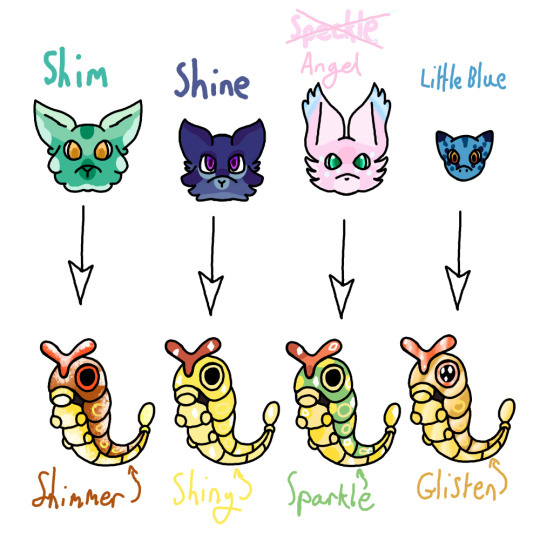
In the very beginning the very first shiny mew was Shim, named such for his unusual coat color that shimmered moreso compared to the other mews that had been made. He created the first alternative palette pokemon who are known as Shimmers (colors based off of older game shinies). Identified by the shimmering of light off their coats/furs/scales and often different colors to modern shinies. These variants are rarer than shinies as they are naturally out competed by the modern day shinies.
Shimmer pokemon as a concept the name use of older game shinies for colors and the shimmer effects to represent the shininess all together is not a free to use concept, please don't take the term shimmer and use it in this exact way, currently only one person has my direct permission to use this exact concept in their works.
When Shim rebirthed Shine was born and with that the modern day shiny colors and the distinctive diamond shine shape that Shinies got their name from. The Shiny gene near replaced the Shimmer gene entirely making it the dominant expressed gene for alternative colors. (Shines design was made by @blues-sues they've become a canon design to the blog yoink)
Shines rebirth created Speckle, who later renamed herself to Angel, Sparkles were created, these pokemon gained extra shining effects resulting in their more sparkly appearance, with Angel also came the genetic ability for half/partial shinies. Sparkles are characterised as pokemon that either partly express shiny traits via spots patches gradients ect or have extra shine affects to them.
From Angel came Little Blue who later becomes Vector, with her creation would've came Glistens, these shiny variants would've been characterised by their colors being somewhat old shiny color leaning but not always but more specifically their coats/fur/scales ect getting a more polished crystallized jewel like shine to them as though terastelized and shining in their eyes they glisten like precious gemstones.
Included is a sort of genetics dominance chart for the different variants of these shining genes

Generally Shiny wins out with Glistens and Shimmers cancelling each other out. This does not mean breeding two shinies guarantees a shiny pokemon this is just to demonstrate which one you're more likely to get when breeding different shining pokemon.
Due to the Sparkle gene being characterised with either partial shiny expression or just extra sparkle in the fur/coat/scales that gives this gene the unique ability to combine with the glisten and shimmer gene, Shiny gene would just overwhelm it entirely.
Shimmering Sparkles are pokemon that either; express partial shimmer gene and extra shine
Shimmer colors with extra sparkle on top of shimmering
Or lastly the expression of Shimmer gene and shiny gene at the same time, common in fusions if one half carries shimmer gene and the other half a shiny gene and they both express being double colored puts them under the Sparkle categorisation and being that the shimmer gene is older it is the dominant descriptive trait leading to Shimmering Sparkles
@blastedoffagain would have an example of a Shimmering Sparkle with their Vaporeon Dragonpult mix, the Vaporeon half expresses the shimmer gene while the dragapult size expresses the shiny gene
Glistening Sparkle pokemon have yet to be seen but any partial expression of Glisten gene would count as such similar with the Shimmer Sparkles, same for if part of a fusion expressed Glisten traits while the other half expressed a different color shiny or not. Extra sparkles are likely too different to see on a Glisten.
#my art#My world building#My rambles#My lore#Shiny pokemon#The other person who may use shimmers sparkles and Glistens in their works knows who they are lmao I've explicitly told them it's fine#No one else can use my shit XD#Only them#Shim is also different to the modern shiny blue because well he's a shimmer making his colors older than blue shiny mee#Wanted him to be more green to have closer links to shiny Mewtwo especially with Vector
9 notes
·
View notes
Text
Hebitian Language: terms for family
(Disclaimer: I'm not good at conlangs, so this is more vocabulary than anything else)
Let's look at three Hebitian languages here! The majority langusges of the Alåsh, the Thav, and the Qåmtsu. The Alåsh are from the somewhat isolated Valley of the Hebitians, the Thav from the similarly isolated northern regions of the Helta Highlands, and the Qåmtsu from the delta and hills near Lakarian City and Central City. The Alåsh and Thav are interesting because they're traditionally considered "conservative" cultures, having less cultural exchanges with other groups and the Thav being prideful in this regard, and the Qåmtsu having had good and bad relations with Cardassians for a long time. The Alåsh had relations with the Anìjb’èawa /ˈanɪʄˈɓɛɔa/, who lived on the coast north of the Valley, as well as the minor Hebitian groups in the delta north of the Valley and their neighbors. Their language is thought to be the "oldest", or closest to any idea of proto-Hebitian, which has lead to faulty academic study.
As a general rule, Hebitians family terms are broader than Cardassian terms, which are more specific. The word for grandmother and mother are the same, and aunts may be called the same word as well. The most accurate definitions are:
Older female relative - Alåsh: Adzi̊ /aʣɨ/, Thav: Assai̊ /assaɨ/, Qåmtsu: Atzú /aʦy/.
Older male relative - Alåsh: Datsa /'daʦa/, Thav: Dassa /ˈdassa/, Qåmtsu: Dai̊ss /'dɑɨss/.
Older Relative - Alåsh: Påhmú /ˈʙɑhmy/, Qåmtsu: Vahm̂m̂ad /ⱱahɱɱad/.
Older female relatives not directly related to you (i.e. not your parents or their parents) - the Qåmtsu have a word for this concept, but the Alåsh do not. For the Qåmtsu this is shoad /ʃoad/. The Thav typically do not refer to female relatives this way, possibly because their bias is in favor of women. If they do, the Qåmtsu word is borrowed in.
Older male relatives not directly related to you (i.e. not your parents or their parents) - the Thav and the Qåmtsu have a word for this concept, but the Alåsh do not. For the Thav this is shop /ʃoʙ/, and the Qåmtsu, shov /ʃoⱱ/. This was borrowed from the Qåmtsu by the Åv first, who passed it north.
Older relative not directly related to you - only a feature in Qåmtsu, the Thav historically being uncomfortable with gender variance. Pumyad /ˈʙumjad/.
Fem. Relative of the same generation (i.e. siblings, spouses, cousins) - Alåsh: Mai̊dú /maɨdy/, Thav: Måpåp /mɑʙɑʙ/, Qåmtsu: Mavi̊ad /maⱱɨad/.
M. Relative of the same generation - Alåsh: fúi̊ /fyɨ/, Thav: ifúla /ɵˈfyɫa/, Qåmtsu: i̊úyi̊ /ɨyjɨ/
N. Relative of the same generation - Alåsh: dåĝú /dɑɣy/, Qåmtsu: doåyi̊å /doˈɑjɨɑ/
Spouse, partner, lover- sometimes used in conjunction with the previous 3 terms also being used. In Thav, this is related to the word for ink, tús /tys/, with a feminine or masculine affix as appropriate. In Alåsh and Qåmtsu this is related to the word for braided cord, and is a neuter gendered word. Alåsh: huri /huʀɵ /, Thav: Yatús /jatys/, Qåmtsu: gůlti /ˈgʌɫtɨ/
Fem. Relative of a younger generation - Alåsh: åmo /ɑmo/, Thav: om̂oj /oɱoy/, Qåmtsu: åmmush /ɑmmuʃ/
M. Relative of a younger generation - Alåsh: khi̊ng /χɨŋ/, Thav: qi̊q /qɨq/, Qåmtsu: khi̊q /χɨq/
N. Relative of a younger generation - Alåsh: i̊vyå /ɨvjɑ/, Qåmtsu: i̊úy /ɨyj/
Your daughter- only a feature in Thav. Other Hebitian languages would use the appropriate possessive paired with the appropriate word for a relative of a younger generation. (Many Hebitian languages have a word meaning "my (belonging to an individual)" and a different word meaning "my (belonging to a group the speaker belongs to, such as a family, village, city, etc). Dzův /ʣʌv/
Your son- see above. Shmo /ʃmo/
Relative more than two generations removed from you (great grandparents and on), ancestor- Alåsh: umi̊yång /ˈumɨjɑŋ/, Thav: omi̊yån /omɨjɑn/, Qåmtsu: um̂m̂uyång/'uɱɱujɑŋ/.
These are not the only terms for family or other persons in society.
Hag, Auntie, old woman, nursemaid, midwife- thanks to Cardassian records, this word is often translated as hag, which does match to how it's used when said derogatorily, but in intention is more often used as a somewhat affectionate title for an older woman who is not necessarily related to you. Laad /ɫaad/ in Qåmtsu, Loådú /ɫoɑdy/ in Alåsh, Låp /ɫɑʙ/ in Thav.
The above has been very incorrectly translated as wet nurse in Vulcan studies of Hebitian culture in an attempt to convey the idea of a particular relationship between adults who share in parenting a child without adopting them, being closely related to one of the parents, or marriage to one of the child's parents, known in Hebitian as håmdafi̊ /hɑmˈdafɨ/. Nursemaid is an alternative to this, but wrongly implies this relationship is always transactional- traditionally, this is an intimate relationship, almost like a godparent. That translation is rarely used in the Federation and carries incorrect connotations. It could be somewhat transactional, such as in Hebitian aristocratic families, but this relationship always conferred kinship rights and expectations onto the "outside" party being brought in, not just between them and the child, but the rest of the family too. A newer translation is "nest warmer", as one of the duties in early child care is keeping the infant close to you near constantly until their thermoregulation develops fully, and even after this many children find cosleeping and extensive body contact comforting. This term is still not without controversy: Hebitians on Vulcan have criticized it as likening them to animals, bluntly pointing out they sleep in beds, not nests. The Hebitian preference- among those who speak on it publicly- is to leave the word untranslated with an explanation, with discussion of similar relationships, but to not try to replace the word with words describing those relationships.
Cardassians have a similar concept, but the relationship is entirely between the adult and the child they care for, typically a partnered couple, and less commonly a single woman, and even less commonly, a single man. By contrast, no particular tendency of this sort was implied in many Hebitian permutations of this practice.
Guy, Uncle, "male auntie", old man, nanny- see above, though the derogatory translation was "male auntie" in Cardassian because of different perceptions regarding gender (Cardassians still putting high value on there being a hard distinction). Lodi̊ng /ˈɫodɨŋ/ in Alåsh, Mi̊or /mɨoʀ/ in Thav, Lov /ɫoⱱ/ in Qåmtsu.
Guy, older person- neuter of former two terms. These three terms are usually used by the children to refer to the adult in the case of the nursemaid/godparent/etc relationship. Adults in that relationship may use these terms for the other person, or may use "relative of the same generation" + an affectionate suffix, much like one might for a spouse. Suffice to say, it's a relationship not neatly described as platonic, romantic, or anything else. Lasi̊m /ˈɫasɨm/ in Alåsh, Låtzi̊ú /ɫɑʦɨy/ in Qåmtsu.
Unserious partner, person you're having sex with, the partner you have before you're really mature: adzu /aʣu/ in Alåsh, madzol /maʣoɫ/ in Thav, atzúa /aʦya/ in Qåmtsu.
30 notes
·
View notes
Text
Personal Demons Worldbuilding: Hellhounds And Other Creatures
as always, let me know if you'd like to be removed from the tag list, lmk, i tagged everyone on the tag list whose urls still work :D
@golden-eyed-writer @halfbloodlycan @kclenhartnovels @idreamonpaper @thespooniewrites @reininginthefirewriting @malkinse @rrrawrf-writes @incandescent-creativity @sheralynnramsey @lady-redshield-writes @aesterea @theguildedtypewriter @elliot-orion @gingerly-writing @fragmentedink @pouchedmilk @chalilodimun @severe-fangirl-syndrome @boyswillbekillers @poetinprose
Hellhounds: All hellhounds are able to go home without the use of a portal, although it’s quickly draining and they don’t do it often. Sizes range from a large dog to the size of a large horse, and their forms vary from skeletal to large and fluffy, with many variants in between. Most of them have fur colors of varying shades of grey, brown, and black or some combination thereof. Some hellhounds are little more than pets, while others are bred for guarding, tracking, and battle. When an angel is bitten by a hellhound, it cannot be healed by angel healing, and has to heal on its own. It remains inflamed for a long period, and the more severe bites can lead to fevers. There's an almost 100% guarantee that a hellhound bite will scar. Considering how vain a lot of angels are, you can imagine how much they dislike this.
The Hounds Of Heaven: Like hellhounds, the hounds of heaven are typically large, although not quite as big as hellhounds tend to be. Their fur ranges from white to gold to a reddish gold color, and occasionally silver and grey. The dogs, like their angel counterparts, can heal others. They are intelligent, and can on rare occasions with being they are close to communicate with telepathically. The telepathy is limited to images and impressions. The hounds don’t always, but often chose one person to bond with, and aren’t limited to bond to one person, although in general they tend to extend their bond to their chosen’s life partner. They are usually used as guard dogs, war dogs, etc, but there's exactly one angel (Deryn) who is trying to train hounds of heaven for things that are not just war and fighting. She takes in the unwanted hounds and finds them homes with sympathetic angels.
Fae Hounds: I'm not making this up as I type this, not at all. Fae Hounds come in more variants, weirder variants, that depend on the scape they came from. Which, to be fair, can be applied to the ones above, but fae scapes are so much that they're a bit weirder sometimes. In the way of fur texture, color, length, in the way of size and shape and- well, you get the picture. I think they're very solitary... until they're not. And they're very attentive when not solitary, almost clingy and demanding.
Hybrids: I refuse to worldbuild any beyond the one I've created already, unless someone has specific question. If a hellhound and a hound of heaven have a litter together those pups are deadly to angels. Their bite, even as a little pup, kills within a couple of hours, spreading a sickly white poison through them until it hits their heart and they drop. Because of that, not many exist. If any.
19 notes
·
View notes
Text

Some concept exploration for Vampire Hybrids in my own world. ^^
None of these are 100% set in stone so they will likely change over time, but I do like how these turned out.
I defnitly need to revisit some of my OCs, because they are missing some features according to this chart. xD
#myart#myoc#my characters#worldbuilding#fantasy species#dark fantasy#victorian fantasy#concept art#my world building#my world
9 notes
·
View notes
Text
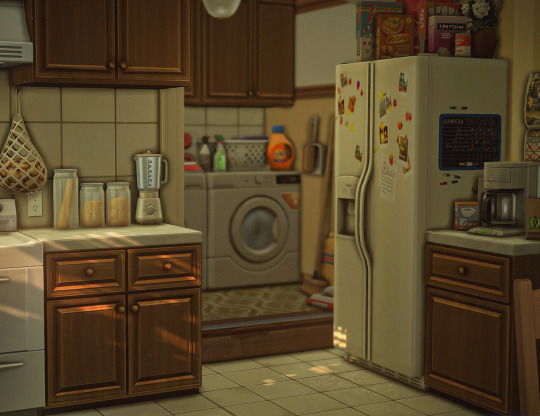

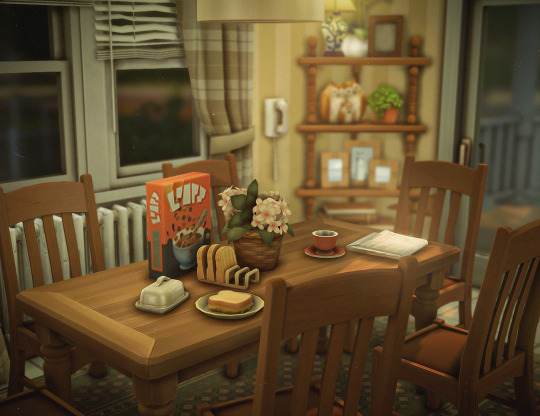
6am at the butler family home
it smells like coffee beans, buttered toast and laundry detergent in this kitchen
#im genuinely so grateful to awingedllama for the nostalgia cc#it means the world to me#i want my game to feel as comforting as possible#ts4#sims 4#the sims 4#simblr#maxis match#my build#my interior#ts4 interior#ts4 screenies
2K notes
·
View notes
Text


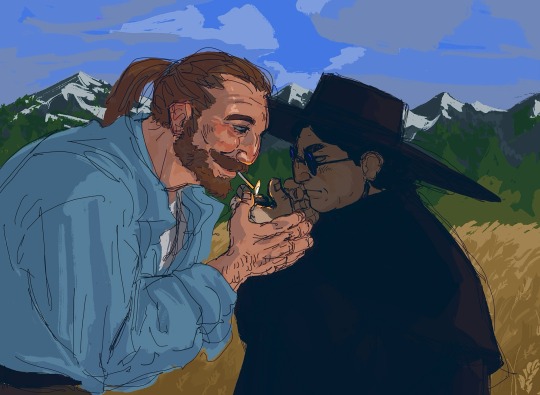
pelican town, ‘72
#stardew valley#stardew valley spoilers#sdv#sdv spoilers#grandpa#mister qi#mr. qi#idk how dates work in stardew universe im just bullshittin#i love qi’s huge fucking eyebrows you dont notice them at first but theyre there#(gives our collective grandpa a ponytail) i think he had one. whatever#’why isnt mister qi blue’ my hc is he is blue from long-term iridium supplementation#and was originally just a regular person#but also it’s nice to see ur fav be like a normal human color#if u read tag essays tho consider this:#qi discovers secret to immortality (consuming iridium in a specific manner)#wants to share discovery with his farmer (player’s grandpa) and in that way. they will have all the time in the world to build#a perfect farming/business empire whose legacy will last forever and ever and theyll be 2gether forever#but it turns out. like a lot of normal people would. his farmer does not want to live forever#and obv he doesn’t#in an attempt to try not to ever lose the thing that means more to him than anything else in the world. qi inadvertantly ensures he will#because his farmer is dead. and he’s going to live forever#but. it’s kind of ok. because he has infinite money and was able to figure out how to talk to his dead bf#and now YOU help them fulfill their joint goal of making the farm’s legacy last forever#smile. heart#sobbing
1K notes
·
View notes
Text
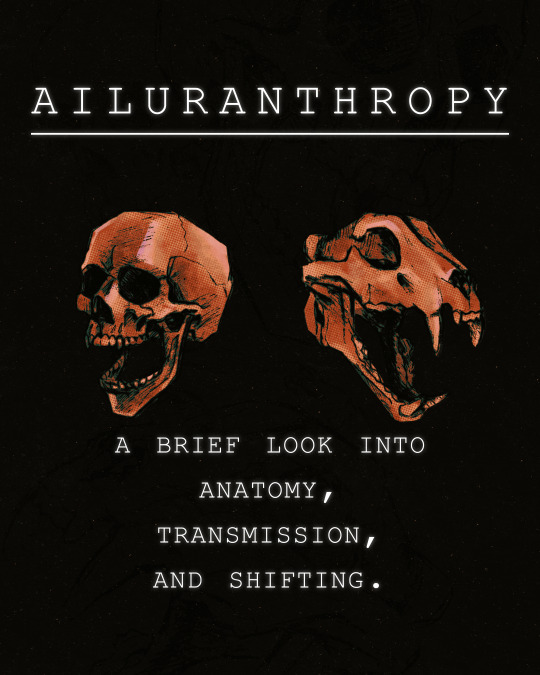
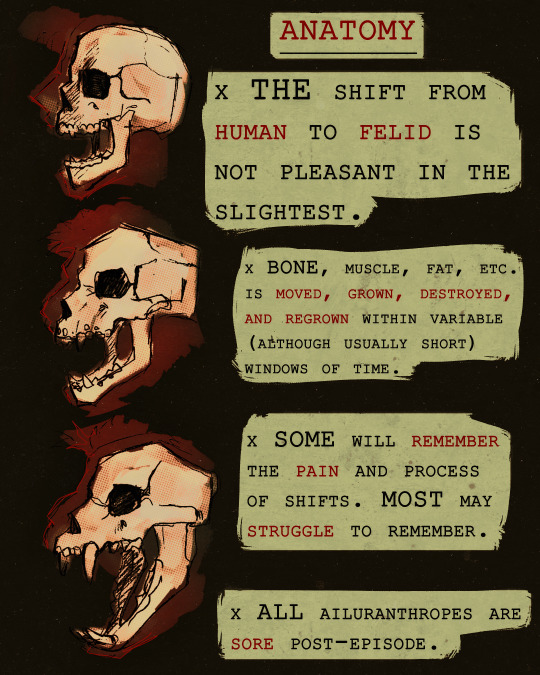
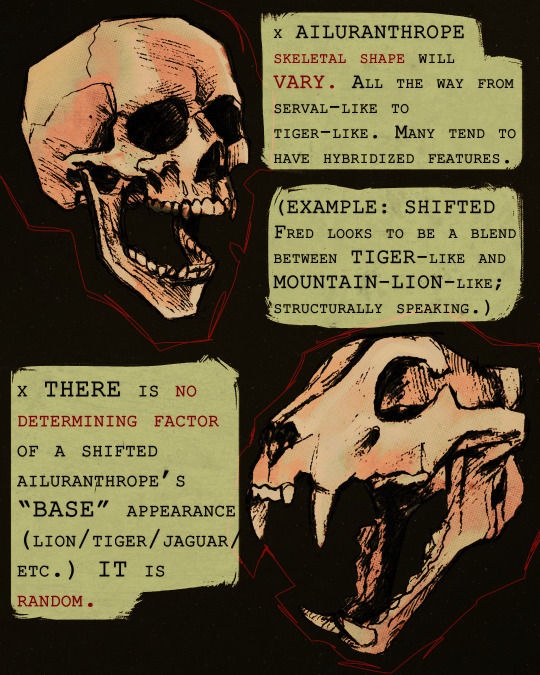
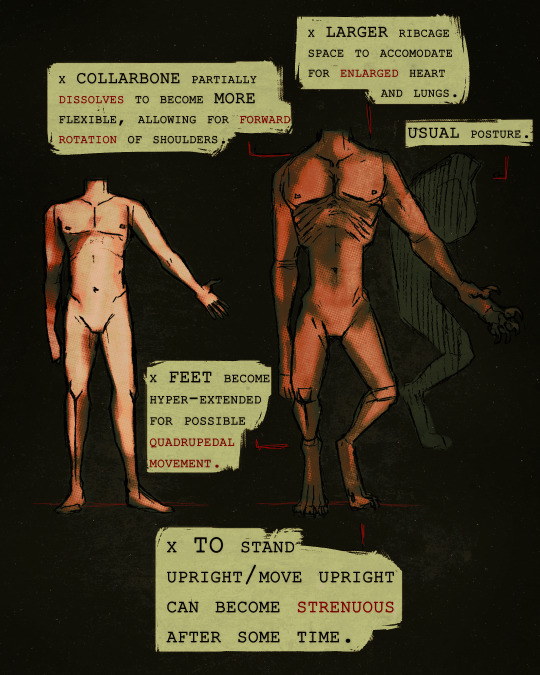

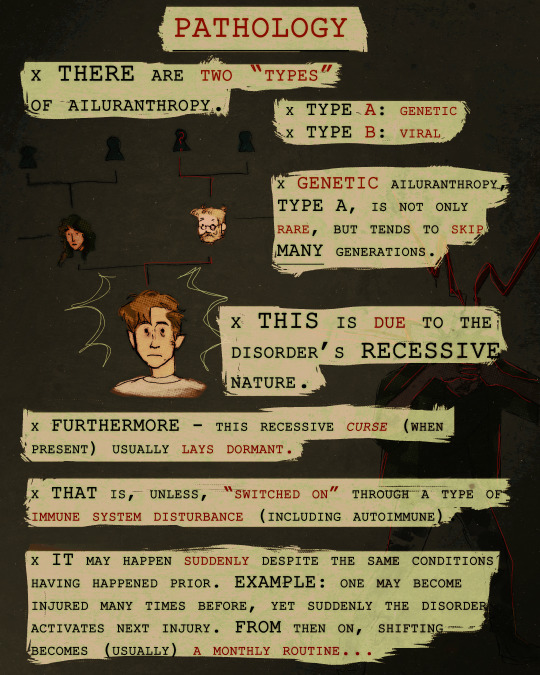
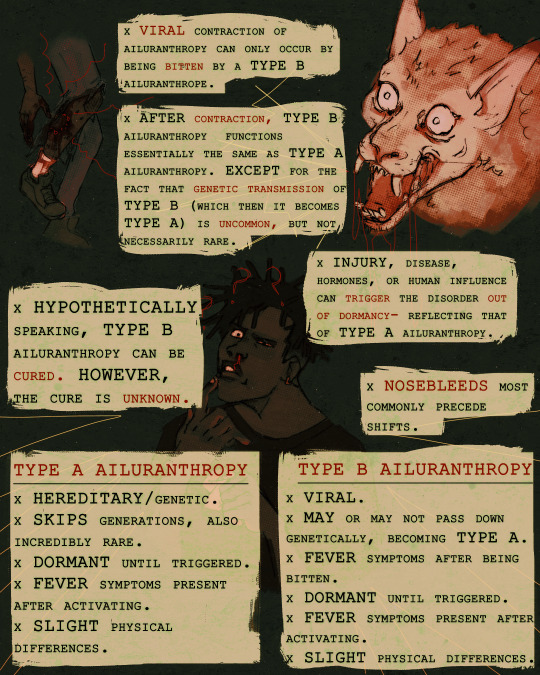


A I L U R A N T H R O P Y 1 0 1
#art#my art#oc#my ocs#my oc#werecat#werewolf#neon#werewolf oc#werecat oc#horror#wanted to do a fun little dossier thing!!! :-D#took waaay too long but YAAAY finally done#i want to make more dossier style stuff of different thangs too..... looking at my alien raptorid dudes#i need to draw up world building type pieces like mad#everything is stored in my brain like a vault i neeed to draw it all out#also if some of this doesnt make sense....... sorry!!! i think in pictures and writing stuff is hard
3K notes
·
View notes
Text

My Lawyer is going to Get Your Ass.
[First] Prev <–-> Next
#poorly drawn mdzs#mdzs#jin guangyao#jiang cheng#nie huaisang#wei wuxian#lan wangji#elle woods#That's right. All this time I was building up towards this punchline.#The pink legal eagle Elle Woods is canonical to the PD-MDZS universe. This will make no sense if you are new around here.#The phone lwj pulls out of his bag of holding has one function. And it's to call Elle Woods. An omniscient and legendary cultivator.#The mandarin is very messy but probably self explanatory. I can only hope it is legible...#Referencing Danganrompa (Sore wa chigau yo!) and Ace Attorney was not on my bingo card for things I would end up doing-#-but it has happened and I am rolling with it. Even if it means a lot is going on in this comic!#the core joke here is that wwx finds himself in a impromptu court and gets a lawyer involved.#A lawyer AU fits these characters so well I am once again blinking long and slow at everyone who’s made an AU for it#Not a single whisper of story analysis in these tags today. It's pure whimsy on the menu.#I am placing a little treat outside of your door. It's a cold world out there and there is so little whimsy to be found.
2K notes
·
View notes
Text

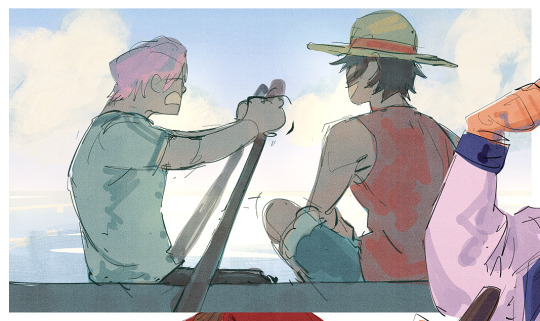
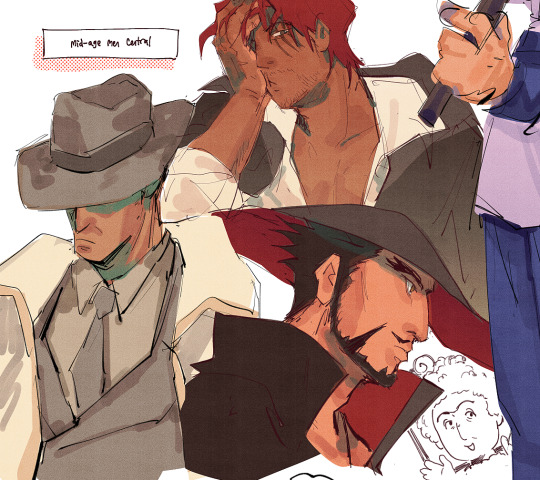
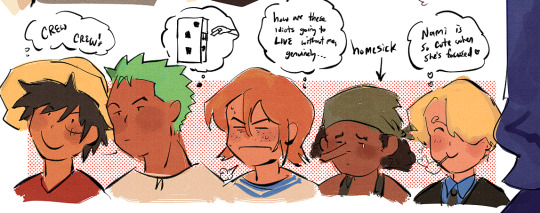
opla inspired!
#one piece#opla#opfanart#nami#monkey d. luffy#roronoa zoro#as the central guys in this little collage... and in the la! i said some of my thoughts in the previous op art tags#the la was suuuper fun and silly... i have my reservations about it but i like that it exists and its clear the crew behind it had#a lot of fun building the world + dynamic between the crew alongside koby. also iv never seen so much one piece in my space!!! im happy#this alongside the new op & ed of recent one piece anime & the manga picking up hype with luffy eughgsnkd (explodes)#anyway the mihawk appearance in opla was crazy. so was the bogard focus - he had more screentime in opla than all of the original animanga#every time he showed up i thought of the man in the yellow hat...#ruporas art
3K notes
·
View notes
Text
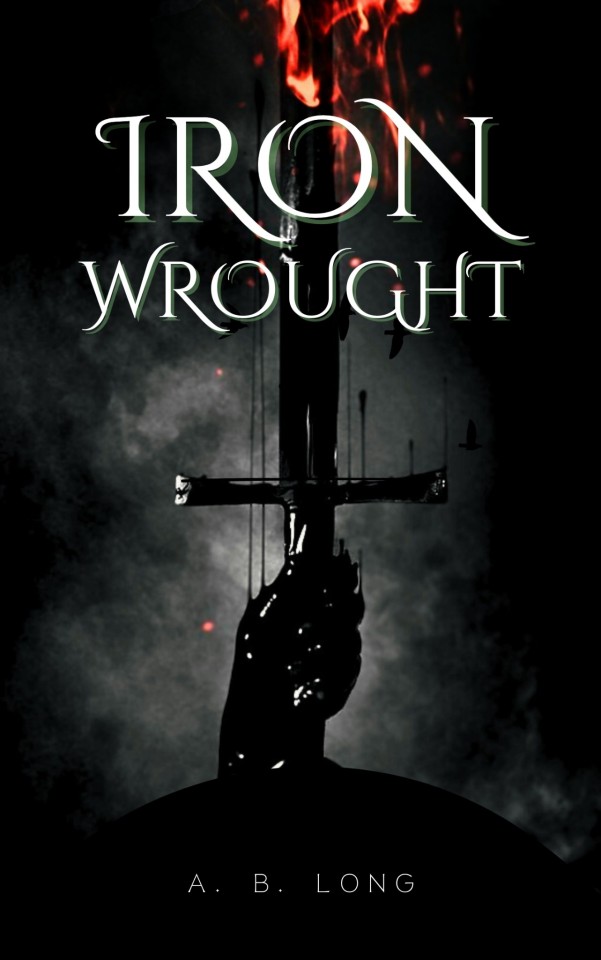
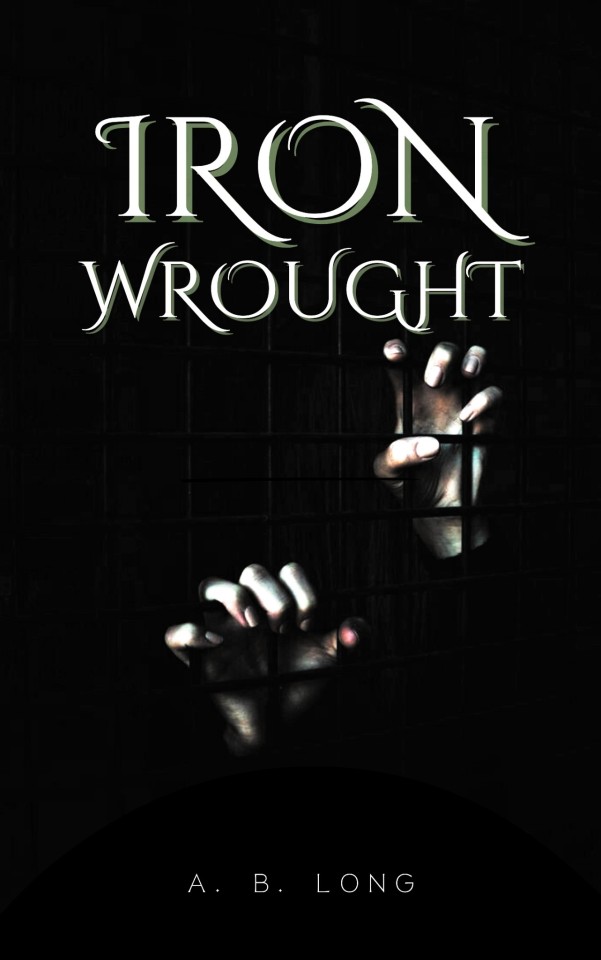

WIP: Iron Wrought: Book One
You are Steel. and Steel feels No Pain
#writeblr#writers on tumblr#wip boost#ch: nik#ch: cameron#ch: bay#my writing#ch: seida#ch: ash#my world building#leave it to me to come up with. name at 4 am smh#iron wrought
23 notes
·
View notes
Text
Distinct but connected- comparing and contrasting Hebitians and Cardassians
One of my goals when writing Hebitians and Cardassians is I wanted them to be cultures with a long, not necessarily violent history prior to colonization under the Cardassian Union, with some level of exchange/relatedness, but also distinct, because I feel it's a dynamic people don't acknowledge as much.
Starting from their environment, Cardassians started as a polytheistic* pastoral community on the southwest of the equatorial contenient on Cardassia Prime, mostly in the desert directly south of the Valley of the Hebitians and the mountains further south of that. Over time, most Cardassians settled in the mountains and subsequently diverged, culturally, from those who retained pastoral life. Pastoral and settled Cardassians maintained necessary trade and kin relations long after, and pastoralism is still common in animal based Cardassian agriculture. The class system that brought the idea of the service class developed after mountain settlement, and the pastoral community is essentially outside of it (a status marked by their family seals having a circle border, instead of the polygonal borders used to designate class). The legal and social status of pastoral Cardassians is complex; other forms of iternancy are restricted, and in some ways the relationship between settled and pastoral Cardassians has degraded. Kin relationships aren't maintained, and the broader social perception often treats pastoralists as a museum exhibit. Additionally, pastoral communities, though they're outside the Cardassian class system, run the spectrum of wealth and severe poverty.
Hebitians, contrastingly, are majority a settled agricultural population** and began that way. It's currently thought Hebitian culture started in the northwest of the Equatorial contenient, either in the Valley of the Hebitians, the delta north of it, or in the Makhå (/ˈmaχɑ/) floodplain to its east. Archeological evidence is limited due to the Cardassian Union being happy to sell artifacts but not to allow drawn out digs from outside academics, and the Occupation signaling a shift where the Union refuses to recognize Hebitians still exist. Exceptions to this are the Thav and Åv, who live in the rather dry Helta Highlands, and a subsect of the Qåmtsu, who lived along the river and Ikhå /ɵχɑ/ delta in house boats. The Thav traditionally were largely fishermen and hunters; their primary contact as an fairly isolated population was the pearl trade. The Åv typically formed middlemen in that trade and engaged in mining and pastoralism.
Hebitians and Cardassians use writing systems derived from the same older writing system, which was originally suited for carving into wood, bone, or stone. The Cardassian version diverged first with the poetic script (which is written with a brush and has a lot of thickness variation), which the computer version seen in the show is based on as a pixel friendly format. A simpler merchant script is also used in school, diaries, and so on, and has little variation in line thickness. The Hebitians have a primary script that's traditionally written with a reed pen, and an older script that's largely fallen out of use that has both logograms and alphabetic elements.
Hebitian and Cardassian gender norms both associate women with metal (in dress and in industry) and being cool headed, while men tend to be seen as emotional/aggressive. Hebitians viewed this work not as "What is suited for women" so much as "men are unsuitable for this", whereas the former sentiment has more weight in Cardassian culture, though the latter also applies, making it so Cardassian women often work in STEM, history, and other jobs with a high importance on being "unbiased". For Hebitians, this has led to a level of favoritism towards women in leadership positions, though not a matriarchy (except for perhaps in the Thav culture).
Both place a high value on large families. However, adoption only has a stigma in Hebitian culture insofar as post-Union social influences, and even then, a citizen of the Union with a Hebitian background is more likely to adopt children. The taboo on adoption for Cardassians is philosophical and religious in nature and stems from how the soul and sin are conceptualized as being related to knowledge. Neither has a nuclear family structure as the norm, but Cardassians solidify family through blood ties more than Hebitians, whose families traditionally are more "unstructured" and built on informal association and blood (the difference being reflected in language as well, with Kardasi having a more specific family vocabulary). These differences in family building and importance of children have led to an "inside/outside" work distinction for female and male Cardassians, respectively. Both also recognize those as who help infants with thermoregulation as part of that infants kin, even if they aren't blood relations.
Both Hebitians and Cardassians have long standing xenophobic cultural tendencies. For Hebitians this reflects their history as a once very powerful family of cultures that controlled around a third of the equatorial contenient and which were known as hard opponents in war, the cultural shift during a long semi-voluntary peacetime and focus on internal politics, and conquest by the Cardassian Union. All three of these eras have had fluctuating cultural attitudes towards outsiders, and different strains of logic behind distrust and fear. For Cardassians today, the xenophobic tendency is tied to the militaristic elements of Cardassian nationalism, especially in their wars with the Klingon Empire and the Federation, and soills over to even affect old trading partners (such as the Ferengi; the word the Federation uses for them comes from Kardasi). The cultural supremacist ideology also has a strong impact. However, it does not come from unfamiliarity in either case. Even when many Hebitian states were isolationist, there were other cultures within them. And in the Cardassian Union (setting aside that Cardassians-as-a-species have many cultures), many planets in the Union had prior occupants that were absorbed into it; the Bajoran system was hardly an anomaly. Even those that were unoccupied possess non-Cardassian residents; people of other species have immigrated to the Union, have loved those from the Union***, and etc.
* Not much is known about older Cardassian religion, not even when mythic figures fell out of worship in favor of deification of the state current in Cardassian civil religion. It's assumed the belief in fate and interest in astrology comes from there, as well as the customs around burial and ancestral veneration. Hebitians make reference to Cardassian religious practices, but these are limited. For example, Hebitians do not use the proper names of Cardassian gods in historical documents- depending on who you ask, this is either because Orallists do not like using the names of foreign gods, or that it was Cardassian custom for others not to use their gods proper names as a matter of respect. Either way, this led to Hebitian documents largely using epithets (such as "lady of mount such and such") to refer to Cardassian gods. It's known the head of the pantheon was a married pair of gods, and that mountains were often deified.
** settled and agricultural does not always mean fields or monocultures. Many Hebitians practice what's called "integrated agriculture", sometimes to the exclusion of fields use such as in the Makhå (/ˈmaχɑ/) floodplain. Integrated agriculture ranges from the creation of environments similar to food forests to the planting and growing of crops integrated into city or even building infrastructure- the latter is where the name derives from.
*** culturally based marriage restrictions in the Union are defined by free and subjugated peoples. Prior to Kardasianization, a Hebitian and a Cardassian being enjoined would be impossible within the Union because Hebitians were classified as a subjugated people, as were Bajorans during the Occupation. A Vulcan and a Cardassian however, would have few legal issues as they are both classified as free people.
19 notes
·
View notes
Note
6 for the worldbuilding asks but mostly bc i wanna know how magic interacts with the modern world in the pd universe :o
Ok so. Most angels and demons try to avoid too many interactions with humans because it causes problems as they’ve discovered over the millennia. Not a hard rule, not really a rule rule at all. Kinda frowned upon, only really dealt with when it causes problems. Fae dont give a shit. Witches are the closest tie between humans and magical stuff, but they also keep it pretty low key. Most witches dont even get their magic till their late 30s early forties (cyrus us a fav example of the exception of that, he got his at 28, but hes also a literal witch prodigy soo).
If you’re asking about literal magic vs modern world, angels demons arent too affected by earth and shit, but fae magic can be wonky occasionally on earth, which is why they prefer faerie. Witches pull from the energy around them, so beginners can find it hard to practice magic in cities because they’re full of electricity and people and movement and so much. Kinda like overstimulation but with magic.
4 notes
·
View notes
Photo

Terrain Paint Collection
These are all ground cover textures from World of Warcraft. Some of them are just too stinking cute, honestly. ♥
13 dirt terrain paints, 19 stone, and 31 grass/flowers 😬 All the files are numbered and shown on images under the cut so you can pick and choose which you want to keep from the zip file. Unfortunately they aren’t in numerical order in the build catalog, but they all are at the end of each terrain category. Sorryyy.
Download here (CurseForge)

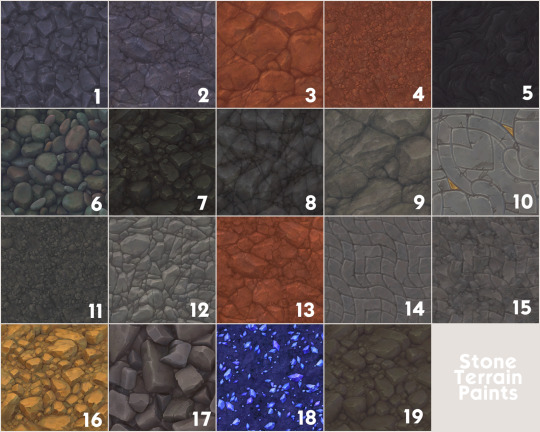
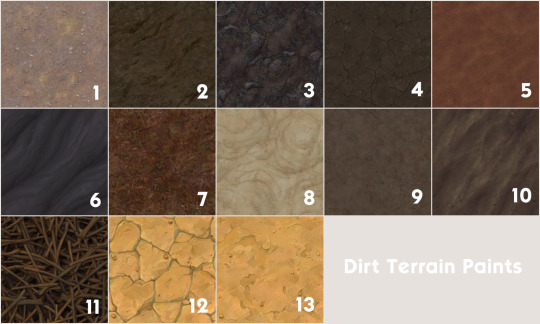
6K notes
·
View notes
Text

here's the full drawing i made for false's tcg collectors edition box!
#i love drawing minecraft builds so much it gives you so much appreciation for all those little details#definitely gonna visit this base first once we get the world download. ive spend so long looking at screenshots#falsesymmetry#hermitcraft#hermitcraft tcg#creospoilers#my art
1K notes
·
View notes